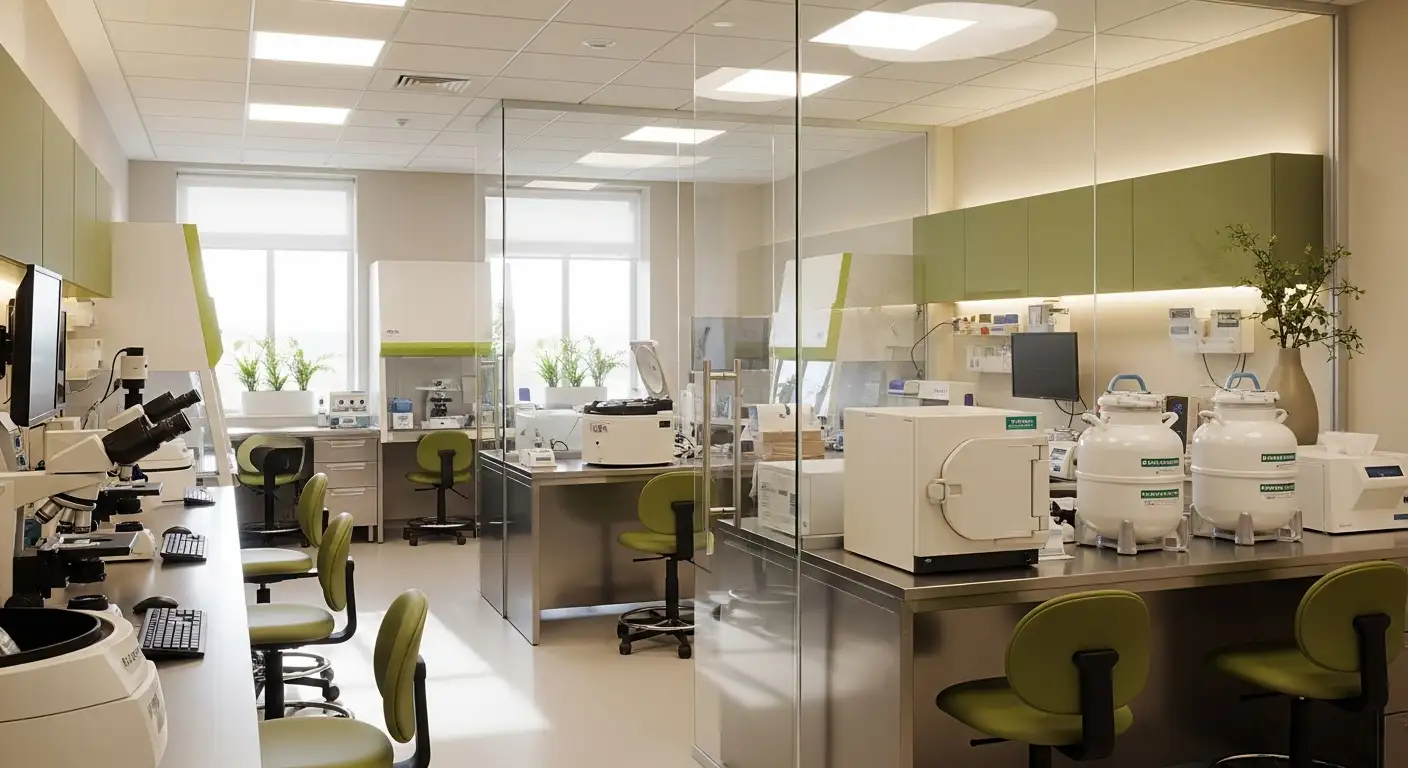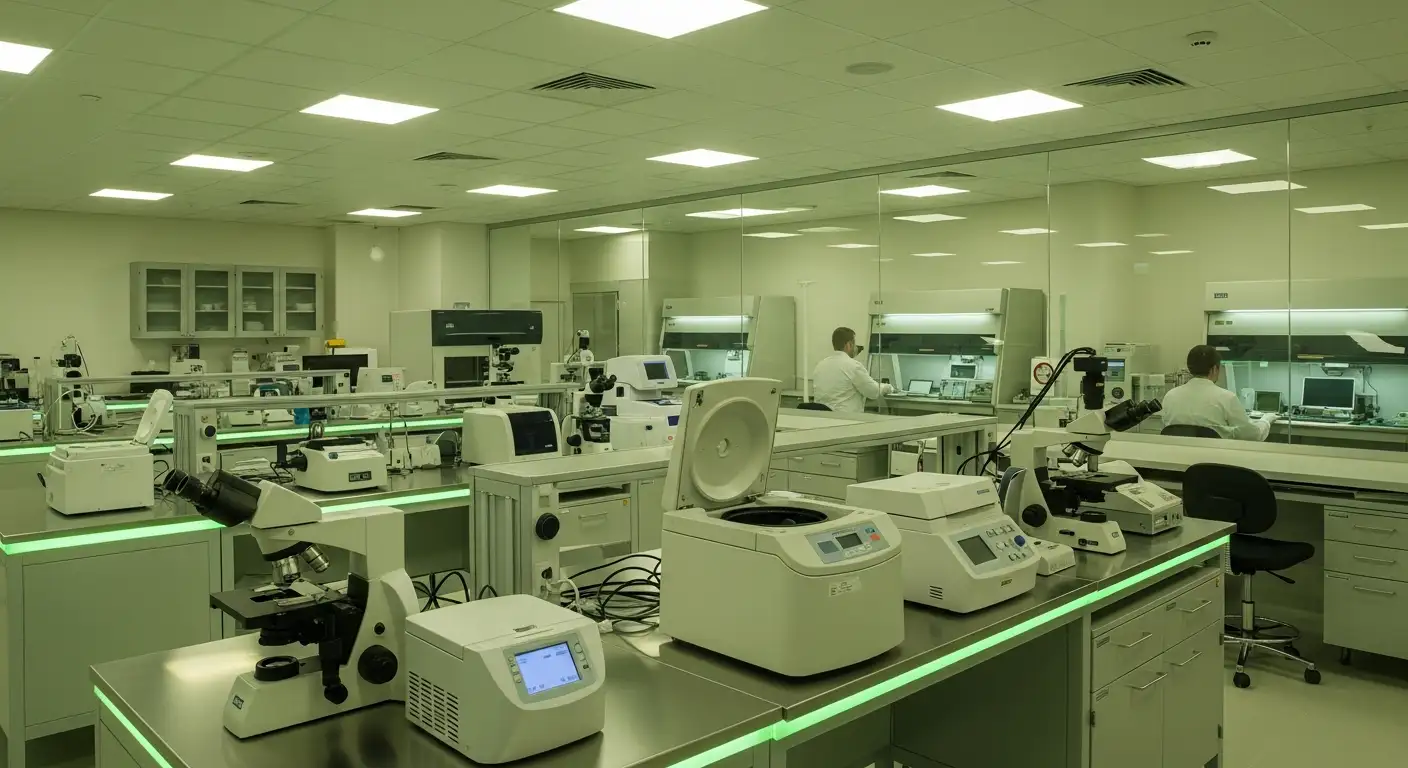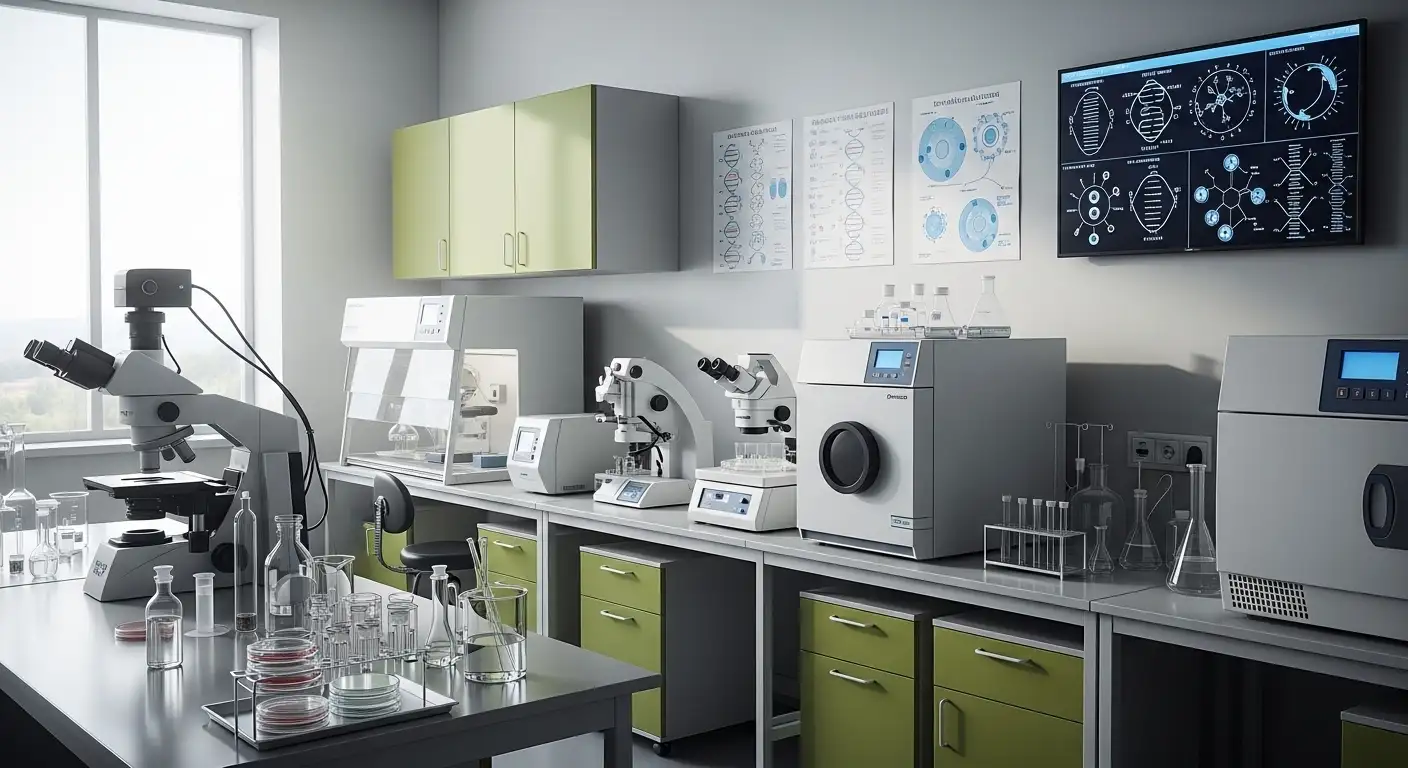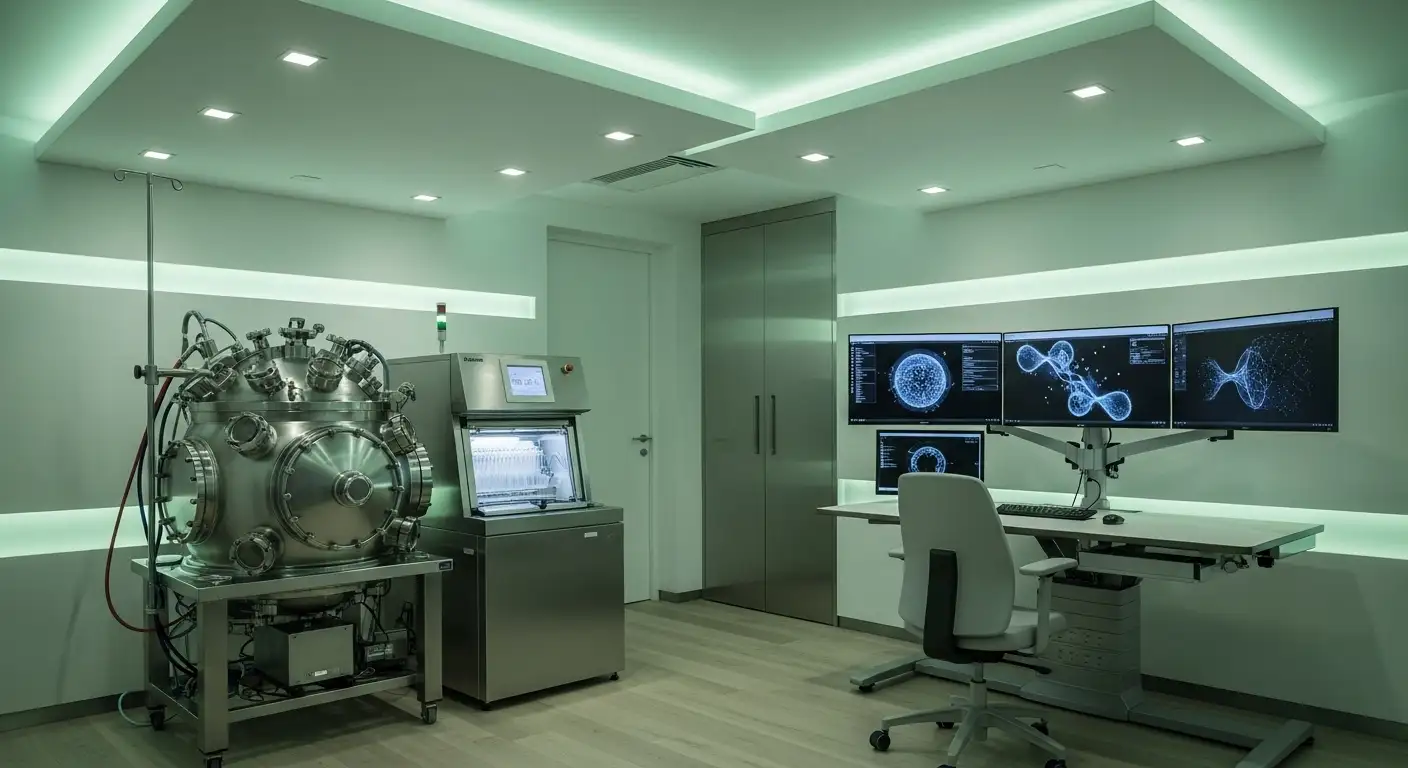How PGT-A testing can improve IVF success rates
Maximizing Success in IVF with Genetic Screening

Understanding the Role of PGT-A in Assisted Reproductive Technology
Preimplantation Genetic Testing for Aneuploidy (PGT-A) has emerged as a significant advancement in the field of in-vitro fertilization (IVF). This technology involves analyzing embryos for chromosomal abnormalities before transfer, with the goal of improving pregnancy outcomes. While its benefits are particularly notable in specific patient groups such as older women or those with recurrent pregnancy loss, current evidence suggests that the routine use of PGT-A across all populations offers limited advantages. This article explores how PGT-A can influence IVF success rates, the process involved, its benefits, limitations, and the scientific basis supporting its application.
Technical Aspects of PGT-A and Embryo Evaluation
What is the process and procedure of PGT-A testing in IVF?
Preimplantation genetic testing for aneuploidy (PGT-A) is a sophisticated procedure performed during in vitro fertilization (IVF) cycles to assess the genetic health of embryos before transfer. The process begins with cultivating embryos to the blastocyst stage, typically around day five after fertilization. At this stage, a small number of cells are carefully biopsied from the trophectoderm, which is the outer layer of the embryo. This approach is designed to avoid damaging the inner cell mass that will develop into the fetus.
Once the cells are collected, they are cryopreserved for analysis. The genetic testing is then conducted in specialized laboratories using advanced techniques such as next-generation sequencing (NGS). This technology allows for a detailed analysis of all 23 pairs of chromosomes to identify conditions like aneuploidy, where there is an abnormal number of chromosomes, and mosaicism, which indicates a mixture of normal and abnormal cells.
Results generally classify embryos into four categories: euploid (normal), aneuploid (abnormal), mosaic, or no result (inconclusive). Typically, the entire process, from biopsy to results, takes about 1 to 2 weeks. These insights are invaluable for selecting embryos with the highest potential for successful implantation and pregnancy, thereby improving the overall success rates of IVF.
Potential Benefits of PGT-A in IVF Success Rates

How can PGT-A testing improve IVF success rates?
Preimplantation Genetic Testing for Aneuploidy (PGT-A) has become an essential tool in modern IVF procedures. Its main benefit is the ability to accurately identify embryos that have a normal number of chromosomes, known as euploid embryos.
By selecting these healthy embryos for transfer, the likelihood of successful implantation significantly increases. Studies suggest that PGT-A can boost pregnancy rates per embryo transfer by approximately 10-20%. This improvement is especially beneficial for women of advanced maternal age, where chromosomal abnormalities are more prevalent.
Moreover, PGT-A reduces the probability of miscarriage, which often occurs due to genetic abnormalities in the embryo. This means more pregnancies can reach full term, improving the overall success rates of IVF treatments.
Another critical advantage is the prevention of passing genetic disorders such as Down syndrome. By screening embryos before transfer, couples can confidently select chromosomally normal embryos, enhancing genetic health for future children.
Additionally, the use of PGT-A allows for better planning, reducing the number of IVF cycles and embryos needed to achieve pregnancy. Overall, it streamlines the process, making IVF more efficient and effective.
What are the benefits and advantages of PGT-A testing in IVF?
The primary benefits of incorporating PGT-A into IVF protocols are improved embryo selection and increased chances of success. This genetic testing helps identify the most viable euploid embryos, which are more likely to implant successfully.
Furthermore, PGT-A helps decrease the risk of miscarriage by filtering out embryos with chromosomal abnormalities. This reduction is particularly important for women over 40, where age-related aneuploidy is common.
Another advantage lies in strategic embryo transfer planning. By knowing which embryos are chromosomally normal, clinicians can opt for single embryo transfers confidently, decreasing the risk of multiples and associated complications.
Despite the additional cost and minimal risks like embryo damage during biopsy, recent technological advances have mitigated these concerns. Fewer IVF cycles, higher success rates, and fewer miscarriages contribute to the overall value of PGT-A.
In summary, PGT-A not only increases the probability of pregnancy but also enhances the overall safety and efficiency of IVF treatments.
| Benefit | Description | Additional Notes |
|---|---|---|
| Improved embryo selection | Identifies euploid embryos for transfer | Leads to higher implantation and live birth rates |
| Reduced miscarriage risk | Excludes embryos with chromosomal abnormalities | Particularly beneficial for older women |
| Genetic disorder prevention | Avoids passing on genetic conditions like Down syndrome | Provides assurance of genetic health for offspring |
| Fewer IVF cycles and costs | Higher success per cycle, less need for repeated attempts | More efficient, may reduce overall treatment expense |
| Safer embryo transfer | Enables single embryo transfer, reducing multiple pregnancies | Lowers risks associated with multiple births |
This structured approach ensures clarity and accessibility for readers exploring the impact of PGT-A on IVF outcomes.
The Scientific and Clinical Evidence Behind PGT-A

What scientific and clinical evidence supports PGT-A testing for improving IVF outcomes?
The evidence regarding the effectiveness of PGT-A in enhancing IVF success remains mixed. Several randomized controlled trials and meta-analyses have investigated its impact.
For instance, the STAR trial, a well-known study, found that PGT-A did not significantly increase pregnancy or live birth rates in women aged 25-40 when traditional morphology was used to select embryos. This suggests that, in certain populations, PGT-A may not offer substantial benefits.
However, other research points to advantages, especially for women over 38. These studies indicate that PGT-A can reduce miscarriage rates and shorten the time to achieve pregnancy by ensuring only chromosomally normal, or euploid, embryos are transferred.
Recent technological advancements, such as next-generation sequencing (NGS), have markedly improved the accuracy of aneuploidy detection. NGS tests all 23 pairs of chromosomes simultaneously, providing a comprehensive assessment.
Organizations like the European Society of Human Reproduction and Embryology (ESHRE) stress that while current evidence shows promise, high-quality, large-scale clinical trials are still needed. They emphasize the importance of targeted use of PGT-A, especially in specific groups like women of advanced maternal age.
In summary, although PGT-A shows potential, especially in reducing miscarriages and improving outcomes for certain women, definitive evidence supporting its routine use across all patient populations is still lacking.
What are the limitations and considerations of using PGT-A testing in IVF treatments?
Despite its benefits, PGT-A comes with notable limitations that require careful consideration.
One challenge is detecting mosaicism, where an embryo contains both normal and abnormal cells. This can result in the inadvertent transfer of embryos with potential genetic issues or the unnecessary discarding of viable embryos.
The biopsy process itself may pose risks, including potential damage to the embryo, which could affect implantation potential and overall viability.
Various testing platforms, including fluorescence in situ hybridization (FISH), array comparative genomic hybridization (aCGH), SNP arrays, and next-generation sequencing (NGS), differ in their resolution and susceptibility to bias. These differences can lead to false positives or negatives, influencing clinical decisions.
High rates of mosaicism detected in some embryos make interpreting test results complex. This uncertainty complicates decisions on which embryos to transfer.
Furthermore, PGT-A does not guarantee pregnancy success or guarantee a healthy baby. Its effectiveness depends on multiple factors, such as embryo quality, maternal age, and laboratory conditions.
Given these limitations, PGT-A should not be viewed as a standalone solution but as part of a comprehensive plan tailored to individual patient circumstances.
Summary of PGT-A Benefits and Limitations
| Aspect | Benefits | Limitations | Additional Notes |
|---|---|---|---|
| Purpose | Detects chromosomal abnormalities | Cannot detect all genetic disorders | Aims to improve embryo selection |
| Impact | Can increase implantation; reduce miscarriage | Mosaicism detection issues; false results | Does not ensure pregnancy |
| Technology | Advances like NGS improve accuracy | Biopsy risks; resolution limits | Continual technological improvements |
| Clinical use | Potentially shorter time to pregnancy for older women | Not universally effective | Requires expert interpretation |
While PGT-A offers promising benefits, its limitations indicate the importance of personalized treatment planning and cautious interpretation of results.
Special Considerations and Patient Subgroups
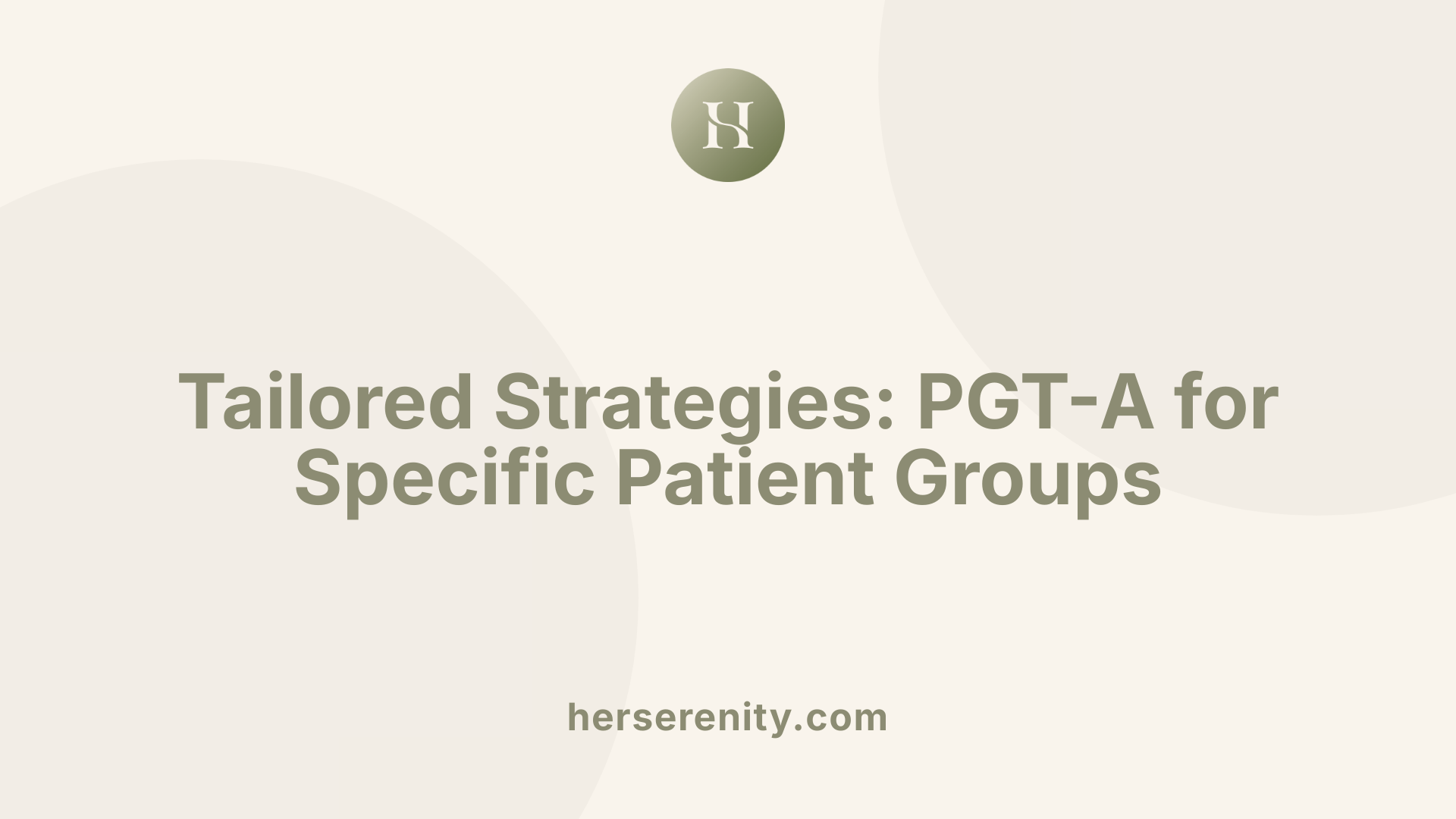
Use in advanced maternal age
Women of advanced maternal age (AMA), generally defined as 38 years and older, are at increased risk of chromosomal abnormalities in their embryos. PGT-A has been shown to have some potential benefits in this group. Specifically, it can help identify euploid (genetically normal) embryos, which can significantly improve the chances of successful implantation and live birth.
Research indicates that in women aged 38 or older, the use of PGT-A can lead to higher live birth rates and a shorter time to pregnancy. For example, one analysis found that live birth rates over a year of treatment were higher for older women using PGT-A (51.2%) compared to those not using it (36.4%). Additionally, PGT-A allows for more accurate embryo selection, resulting in fewer embryo transfers and lower miscarriage rates.
However, it's important to emphasize that this benefit is not universally accepted, and current evidence is not conclusive due to limitations in study quality. While PGT-A may provide a strategic advantage for older women, it is not guaranteed to improve outcomes in all cases.
Impact on patients with recurrent pregnancy loss
Patients experiencing recurrent pregnancy loss (RPL) often seek additional testing to identify the underlying causes. Since genetic abnormalities are a leading reason for IVF failure and miscarriage, PGT-A can be a valuable tool in this context.
Screening embryos for aneuploidy helps to select genetically normal embryos for transfer, thus reducing the risk of miscarriage in women with a history of multiple losses. While evidence suggests that PGT-A can lower miscarriage rates in this group, it does not eliminate the risk entirely.
Some studies indicate that patients with recurrent pregnancy loss benefit from PGT-A through improved pregnancy outcomes and fewer transfers needed. Nonetheless, the decision to use PGT-A should be individualized, considering other factors such as age, overall reproductive health, and the presence of genetic disorders.
Potential benefits in specific populations
Beyond AMA and RPL cases, certain populations may see particular advantages from PGT-A. For example, couples known to carry genetic disorders can use PGT-A combined with targeted testing to prevent passing on specific genetic conditions.
In addition, cases involving multiple failed IVF cycles might benefit from PGT-A to better select viable embryos, potentially increasing overall success rates.
Although promising, current data do not support routine use of PGT-A for all patients. Its benefits must be balanced against costs, procedural risks, and the limited quality of existing evidence.
| Population Group | Benefits of PGT-A | Notes |
|---|---|---|
| Women ≥38 years old | Increased live birth rates, shorter time to pregnancy | Based on studies with varying quality; benefits more evident here |
| Recurrent pregnancy loss | Reduced miscarriage risk | May reduce the number of transfers needed; does not eliminate risk |
| Women with known genetic disorders | Prevent passing genetic conditions | PGT-A combined with specific genetic testing |
| Multiple failed IVF cycles | Improve chances of success | Evidence is limited; needs personalized assessment |
How does PGT-A testing influence embryo selection and success outcomes?
While PGT-A can improve embryo selection in high-risk groups, overall evidence suggests limited or no significant benefit across the general IVF population. Notably, women aged 38 and older may experience higher live birth rates and shorter times to pregnancy when using PGT-A, due to the higher prevalence of chromosomal abnormalities in this group.
For women with recurrent pregnancy loss, PGT-A may reduce miscarriage risk by selecting genetically normal embryos. Therefore, although PGT-A may offer particular advantages for specific groups, such as older women or those with recurrent losses, its routine use remains a subject of ongoing clinical debate.
What are the limitations and considerations of using PGT-A testing in IVF treatments?
In older women or those with a history of recurrent pregnancy loss, PGT-A can be especially beneficial but is not without limitations. The accuracy of detecting mosaics remains imperfect, and the small biopsy sample may not represent the entire embryo's chromosomal status. It is important to weigh the costs, potential embryo harm, and uncertain overall benefit, as current evidence underscores the need for individualized treatment plans.
More high-quality research is needed to confirm the specific advantages and inform guidelines for utilizing PGT-A in these subgroups. Decisions should consider patient preferences, clinical circumstances, and the limitations inherent in current testing methods.
Frozen Embryo Transfer (FET) and PGT-A’s Role in Success Rates

How does PGT-A testing influence embryo selection and success outcomes?
Preimplantation genetic testing for aneuploidy (PGT-A) significantly improves embryo selection by screening for chromosomal abnormalities before transfer. This process helps identify embryos with a normal number of chromosomes, termed euploid, which have a higher chance of implanting successfully and resulting in a live birth.
Clinics often freeze these genetically normal embryos for use in subsequent transfer cycles through a procedure known as frozen embryo transfer (FET). The combination of PGT-A and FET offers various benefits. Firstly, FET allows the embryo transfer to be scheduled at the most suitable time, which is particularly advantageous in cases where hormonal treatments are used to prepare the uterine lining.
Using frozen embryos also minimizes the stress on the woman's body caused by ovarian stimulation during the initial IVF cycle. This sequencing enhances endometrial receptivity, boosting the chances of implantation.
Additionally, studies indicate that transferring embryos after freezing and thawing can sometimes lead to higher pregnancy success rates than fresh transfers, especially when embryos are carefully selected through PGT-A. The precise timing and reduced hormonal fluctuations contribute to improved clinical outcomes, decreasing the risk of failed implantation and miscarriage.
What are the benefits and advantages of PGT-A testing in IVF?
The integration of PGT-A with FET in IVF cycles offers several advantages. By selecting only normal chromosomal embryos, the procedure maximizes the likelihood of a healthy pregnancy. Transferring euploid embryos has been shown to increase implantation rates substantially and reduce miscarriage rates.
FET further complements this by providing a more controlled environment for embryo transfer. It allows clinicians to optimize uterine conditions, avoid the hormonal variations associated with fresh cycles, and schedule transfers with greater flexibility.
Research suggests that women, particularly those of advanced maternal age, benefit from this strategy. The approach reduces the need for multiple embryo transfer attempts, lowering the chances of multiple pregnancies and associated risks.
Overall, combining PGT-A and FET enhances the efficiency of IVF treatments, often leading to higher live birth rates and quicker achievement of pregnancy, making it an attractive option for many couples seeking fertility treatment.
Summary and Future Directions in PGT-A Use in IVF

What scientific and clinical evidence supports PGT-A testing for improving IVF outcomes?
Preimplantation Genetic Testing for Aneuploidy (PGT-A) has been increasingly used in IVF to select embryos with the correct number of chromosomes, which theoretically improves the chances of successful pregnancy and live birth. Evidence suggests that PGT-A can be particularly beneficial for certain groups, such as women of advanced maternal age (AMA), where it has been associated with shorter time to pregnancy and higher live birth rates in some studies.
However, the overall scientific support for routine use of PGT-A in the general IVF population remains inconclusive. Large randomized controlled trials indicate no significant benefit in improving live birth, miscarriage, or clinical pregnancy rates across all patients. Despite technological advances like next-generation sequencing, which enhances detection accuracy, most of the existing studies have notable limitations, including high or serious bias and very low certainty of evidence. Consequently, organizations like the European Society of Human Reproduction and Embryology (ESHRE) highlight the need for further high-quality research.
Current research efforts focus on identifying specific subgroups—beyond just women with AMA—such as patients with recurrent pregnancy loss, who might derive more significant benefits from PGT-A. As the evidence base grows, clinicians hope to tailor genetic testing more precisely, improving outcomes and resource utilization.
What are the limitations and considerations of using PGT-A testing in IVF treatments?
While PGT-A offers advantages such as increased likelihood of selecting chromosomally normal embryos and reducing miscarriage rates, it also comes with limitations. Detecting mosaicism—where an embryo contains both normal and abnormal cells—remains challenging. Mosaic embryos sometimes get misclassified, impacting clinical decision-making.
Embryo biopsy at the blastocyst stage, although relatively safe, carries a risk of harming embryo viability, which could reduce the overall chance of pregnancy. The accuracy of PGT-A testing varies depending on the technology used; false-positive or false-negative results remain possible, influencing embryo selection outcomes.
Furthermore, PGT-A does not guarantee a successful pregnancy or a healthy birth. Some chromosomally normal embryos still fail to implant or result in miscarriage, due to other genetic or environmental factors. The cost of testing and its availability also pose considerations for many patients and clinics.
Clinicians must carefully weigh these limitations and individual circumstances when recommending PGT-A. It should be integrated into a comprehensive treatment plan, with patient counseling about its potential benefits and shortcomings.
Evolving Technologies and Personalized Medicine in PGT-A
Innovations in genetic testing technologies continue to improve the accuracy and reliability of PGT-A. Techniques like next-generation sequencing enable more detailed analysis of embryos, helping to better detect mosaicism and subtle chromosomal variations.
Personalized medicine approaches are emerging, aiming to tailor PGT-A use based on patient-specific factors such as age, history of pregnancy loss, or infertility diagnosis. By identifying which subgroups are more likely to benefit, clinicians can optimize treatment protocols, reducing unnecessary tests and focusing resources on those who stand to gain most.
As research advances, newer methods such as non-invasive embryo testing are under development, potentially reducing the risks associated with embryo biopsy. These innovations could make embryo screening more accessible and less invasive, further refining the niche for PGT-A in reproductive medicine.
| Aspect | Current Status | Future Potential |
|---|---|---|
| Evidence base | Mixed, with low certainty | More definitive, high-quality trials needed |
| Clinical utility | Limited in general population | Improved, especially for specific groups like AMA |
| Technology | Next-generation sequencing | Non-invasive testing and other innovations |
| Patient selection | Not well-defined | Personalized algorithms based on genetic and clinical data |
Ongoing research and technological evolution will continue to shape the role of PGT-A in IVF, aiming for more precise, effective, and individualized fertility care.
Balancing Evidence and Clinical Practice in PGT-A Application
While PGT-A offers promising benefits—including improved embryo selection and potential increases in success rates—the current evidence underscores the importance of individualized treatment planning. Its application appears most advantageous for specific high-risk groups, such as women of advanced age or with recurrent pregnancy loss. Ongoing research and technological advancements are expected to clarify its role further, possibly making it a standard component in IVF protocols for selected patients. Clinicians and patients should weigh the benefits against limitations and costs, ensuring informed decisions that optimize reproductive outcomes.
References
- The Effects of Preimplantation Genetic Testing for ...
- Genetic testing improves IVF success
- PGT-A Preimplantation Genetic Testing for Aneuploidies
- IVF With Genetic Testing (PGT): Benefits and Success Rates
- The impact of preimplantation genetic testing for ...
- How PGT and FET Can Improve Your Chances of IVF ...
- The Effects of Preimplantation Genetic Testing for ...
- What Is PGT testing? Facts about IVF embryonic genetic ...
- The impact of preimplantation genetic testing for ...

